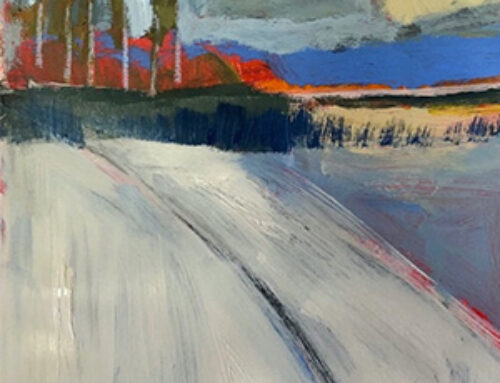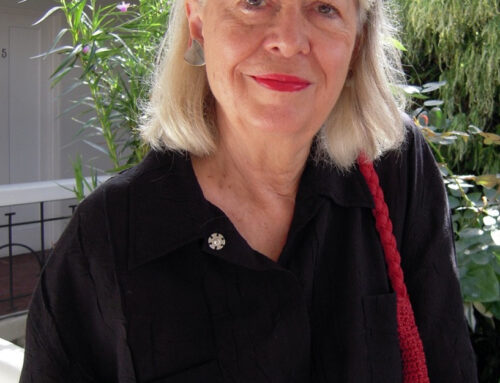Sandra Giunta
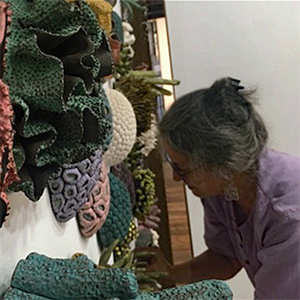 I am a self-taught artist. My journey into art was a meandering path, with forays into teaching, advertising, and antiques. I then earned an EdD in Instructional Technology and Distance Education, which culminated in a career as an Instructional Technology Coordinator for an upstate New York school district. While working full time, I did wood carving, designing signs for businesses. I also carved images on linoleum blocks to print on fabrics for my pieced art quilts.
I am a self-taught artist. My journey into art was a meandering path, with forays into teaching, advertising, and antiques. I then earned an EdD in Instructional Technology and Distance Education, which culminated in a career as an Instructional Technology Coordinator for an upstate New York school district. While working full time, I did wood carving, designing signs for businesses. I also carved images on linoleum blocks to print on fabrics for my pieced art quilts.
Upon retirement, I headed to a local pottery studio which focused on wheel work and functional ceramics. After making an arrangement with the owner for space and kiln use, I was able to focus on figurative sculptural work. My passion for technology and computers was replaced with a passion for clay. At the studio, I explored the properties, colors and textures of clay bodies and studied anatomy.
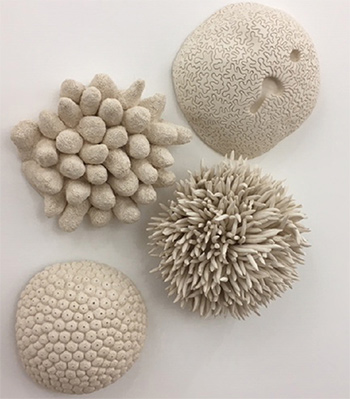 A change of residence lead to a change in focus. My husband and I relocated to Brooklyn, NY for 6 months a year and Belize for the other half of the year. The Belize Barrier Reef became a major influence on my work.The beauty and diversity of the coral reef was explored on snorkeling trips: species, textures, forms, colors, and motion. The local Belize community was very active in protecting the coral reefs from the impact of global warming, pollution, and tourism activities. My coral work explored the
A change of residence lead to a change in focus. My husband and I relocated to Brooklyn, NY for 6 months a year and Belize for the other half of the year. The Belize Barrier Reef became a major influence on my work.The beauty and diversity of the coral reef was explored on snorkeling trips: species, textures, forms, colors, and motion. The local Belize community was very active in protecting the coral reefs from the impact of global warming, pollution, and tourism activities. My coral work explored the
textures and patterns of coral reefs and ocean creatures and was made in conversation with scientific and advocacy work around climate change. Working in my studio in Belize, my sculptures brought corals to the surface to keep awareness of the fragility of the reefs in view.
Returning to Brooklyn, corals were incorporated into my figurative work in a series I called “Coralized.” Coral patterns, textures, and colors were fused with human anatomy to emphasize the human influence and symbiotic relationship that is essential to the survival of both species.
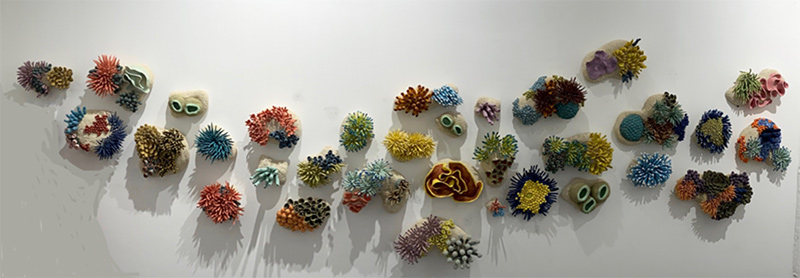
In January 2020, I began experimenting with mason stain pigments for coloring clay and a new process for constructing my pieces. When the Covid lockdown came in March, I was very entrenched in testing this process. Luckily I was able to transfer work and supplies from my studio to my home to continue working. Covid gave the gift of time and my work gave me a focus. My art became my ballast.
As in my earlier work, in the new “Coral Reminders” series, I brought the underwater world above the surface to keep it visible and increase awareness of its precarious balance. My individual coral pieces were expanded to groups of corals and installations.
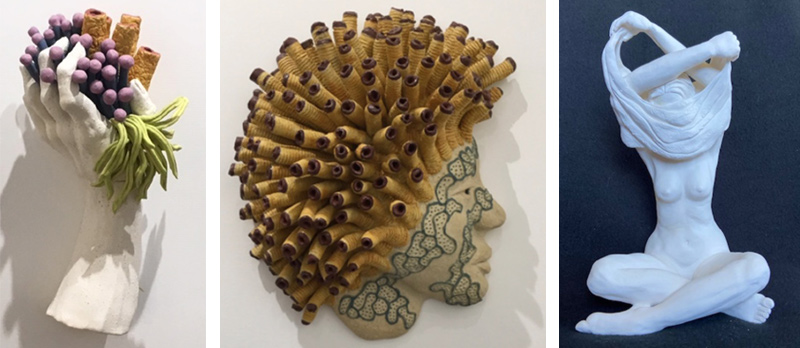
My newest work is an ongoing exploration of clay bodies, mason stains, movement, and textures. I have transitioned into construction of pieces with gradations of color and patterns within frames, making thousands of small shapes incorporated into patterns as the work creates itself within the confines of the frame.
As I expand my learning adventure, I continue my investigation of colors, clays, and firing temperatures while exploring direction, movement and rhythm. My work remains in constant motion, each series an experiment in process and concept.
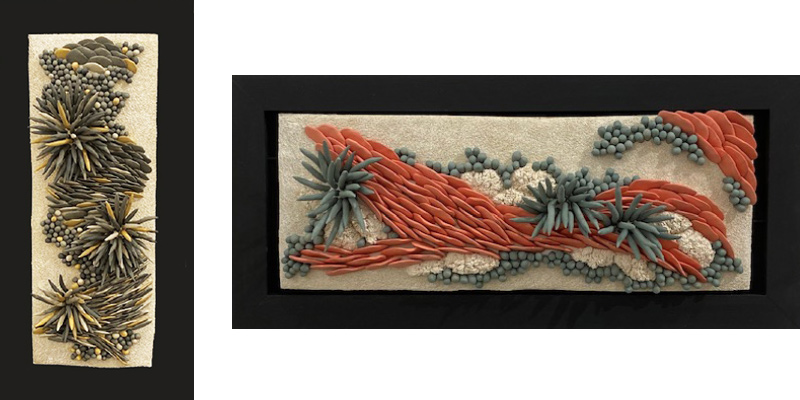
Jessica Hancock
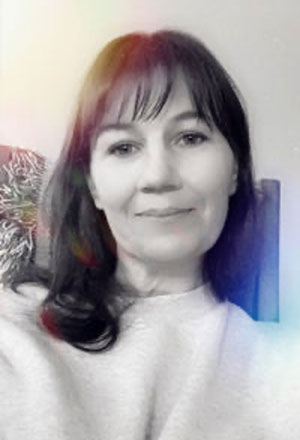
Jessica Hancock
Jessica Hancock is an accomplished, award-winning visual artist producing highly detailed 2D work for contemporary applications. Adapting traditional drawing and watercolor and ink painting techniques, her work has taken a unique path recently.
“The design and artistry I provided to the Alhuda Islamic Center of Indiana is my largest architectural fine art installation to date. I was chosen as the sole artist for the project after a rigorous national selection process and created the signature design patterns used throughout the Masjid (Arabic word for mosque). Everything was completed in four months between February and May 2021. Scale renderings of each project were hand-drawn and painted in ink and watercolor during the COVID-19 lockdown period in July and August 2020. All of my work at the mosque was created on-site and entirely by hand. Paints used were architectural-grade flat enamel acrylic while all the gold leaf was supplied by Giusto Manetti, Florence, Italy.

The grand dome in the Mussalah (or main prayer area) is 28 feet off the ground and coincidentally measures 28 feet in diameter with a 6.5-foot recess. It took 17 days to layout, paint, and gild. The chandelier beneath the dome is crystal and 18k gold plated brass. It measures 14-feet in diameter and weighs approximately 1,200 pounds. It arrived from Egypt in 90 pieces and took five men a week to assemble and hang. I created and installed the Arabic calligraphy using a picture reference provided by the general contractor.
The grand dome in the Mussalah (or main prayer area) is 28 feet off the ground and coincidentally measures 28 feet in diameter with a 6.5-foot recess. It took 17 days to layout, paint, and gild. The chandelier beneath the dome is crystal and 18k gold plated brass. It measures 14-feet in diameter and weighs approximately 1,200 pounds. It arrived from Egypt in 90 pieces and took five men a week to assemble and hang. I created and installed the Arabic calligraphy using a picture reference provided by the general contractor.[/caption]

There are two (2) smaller 14-foot domes that are very similar in design — one in the Gathering Area and the other in the Fatumah Interfaith Room — inspired by artwork found in Al-Masjid an-Nabawi in Medina. The only difference between the two is the amount of gold used in the central pattern — the Interfaith Room uses more. The design pattern within the central geometric pattern is entirely unique with a color scheme central to the Alhuda Masjid.

28 arched windows found throughout the Masjid are frosted with a unique pattern arrangement created especially for the Alhuda Masjid. The glass was already installed before I was able to install the art on it, so I used a scissor lift to reach the spaces (most of which were between 15 and 20 feet up from the floor). The process to apply the art took 4-5 hours each and involved using hand-drawn paper stencils that were cut out by hand into a special plastic film. The frost was then applied over the plastic which was then removed to reveal the pattern in the clear glass.
An earlier creation, The Offering: Cain and Abel, was selected by Pearl Drums to be utilized on their highest-end drum sets. (This artwork was featured in the April 2020 edition of NAWA NOW which can be seen on NAWA’s website.) It is an exquisite marriage between two mediums. The Boy Scouts of American commissioned her work in 2013 and 2017, to support troops from the Crossroads of America Council. She is a brand ambassador for Faber-Castell USA and her work is in public and private collections and international print circulations.
In 1998 Jessica graduated Magna cum Laude with a double major and Bachelor of Science degree in Communication and Art from Westminster College of Salt Lake City.
To see more of Jessica’s professional art applications, go to : www.jhancockart.com
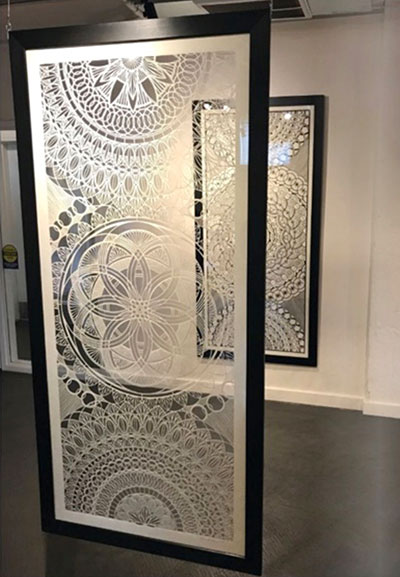
Cut paper
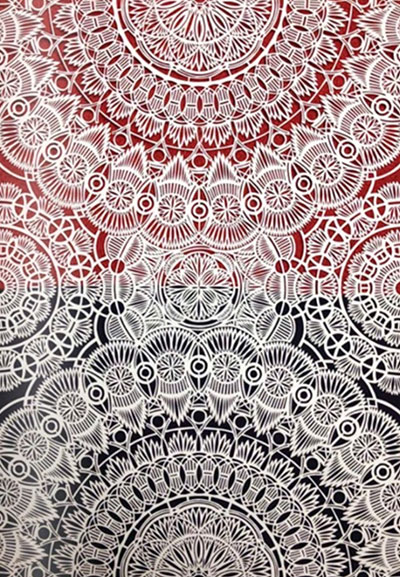
Cut Paper
Alexandra Limpert
“The endless momentum of New York City challenges me to create interactive sculptures. My experience as a mechanical animator for the display industry also influences my work. Natural Essence—Motion Perceived at the Morris Museum is a kinetic group exhibition featuring my Monarch series with motorized wings, and steel sculptures with extraordinary human anatomy. Interactive life-size figure I simulates self-awareness through technology. Once triggered by a sensor, the sculpture appears to make eye contact with viewers. Monumental winged Victory, made of found metal, was inspired by the colossal Nike of Samothrace. I am pleased that my mechanical sculptures are in motion during this transitional time.”

Victory, 2003, Steel and Tin, 101 in. x 65 in. x 32 in.
The Morris Museum Presents Natural Essence — Motion Perceived Exhibition with Sculptures
by Brooklyn Artist Alexandra Limpert
The Morris Museum will feature figurative and kinetic metal sculptures by Brooklyn artist Alexandra Limpert in an exhibition titled, Natural Essence—Motion Perceived. The exhibition opening will take place on April 10th. Featured sculptures include I, Victory, Reptiles, Butterflies and Flowers.
Natural Essence—Motion Perceived, a group exhibition simulates nature with inspiring works of art and kinetic sculptures. Featured artist Alexandra Limpert’s sculpture rises out of her ideology as an artist and mechanical animator. She displays vibrant life forms as well as human figures that are life-size and larger. Alexandra’s versatility with steel allows her to create insects with moving wings, reptiles climbing the walls with clingy claws, colorful blooms and expressive human anatomy. Her sculptures “Victory” and “I’ extend the boundaries of metal figures as incomplete entities, with “I” simulating self-awareness through technology. While monumental winged “Victory” oversees the exhibition, interactive sculpture “I” comes to life seeking eye contact with viewers.
Alexandra Limpert is an artist who creates outstanding figurative metal sculptures as well as eye-catching animatronics. Her work has been seen in numerous galleries, featured in Bergdorf Goodman’s Spring 2014 fashion windows and also in department store windows nationwide. She has fabricated hundreds of animated characters for the display industry.
A professional metal sculptor with years of experience, Alexandra shows her work in New York City art galleries and abroad. Her sculpture commissions include mesh suitcases for Yoko Ono’s installation at the Venice Biennale and also a Chinese dragon for Bergdorf Goodman. The golden dragon display still appears in the Fifth Avenue store and is featured in Windows at Bergdorf Goodman, a limited volume published by Assouline.
Limpert’s figurative sculptures have been featured in The Village Voice, ARTnews, American Contemporary Art, New York Arts, Hyperallergic, The Huffington Post, Elle. PBS City Arts and CBS.
Alexandra graduated with a BFA from Parsons the New School for Design and attended The Yale School of Art. Her professional work background includes fine art painting, and bronze finishing for artists William Tucker and Ben Shahn. Alexandra was a teaching artist who taught children kinetic art with The Rush Philanthropic Arts Foundation. For more information, visit http://www.alexlimpert.com.
The Morris Museum
A Smithsonian Affiliate, The Morris Museum was awarded the Murtogh D. Guinness Collection in 2003 and is home to 750 historic mechanical musical instruments and automata and more than 5,000 programmed media, such as player piano rolls. Selections from this internationally acclaimed collection are featured in a permanent interactive exhibition of more than150 pieces. For more information, visit http://www.morrismuseum.org




